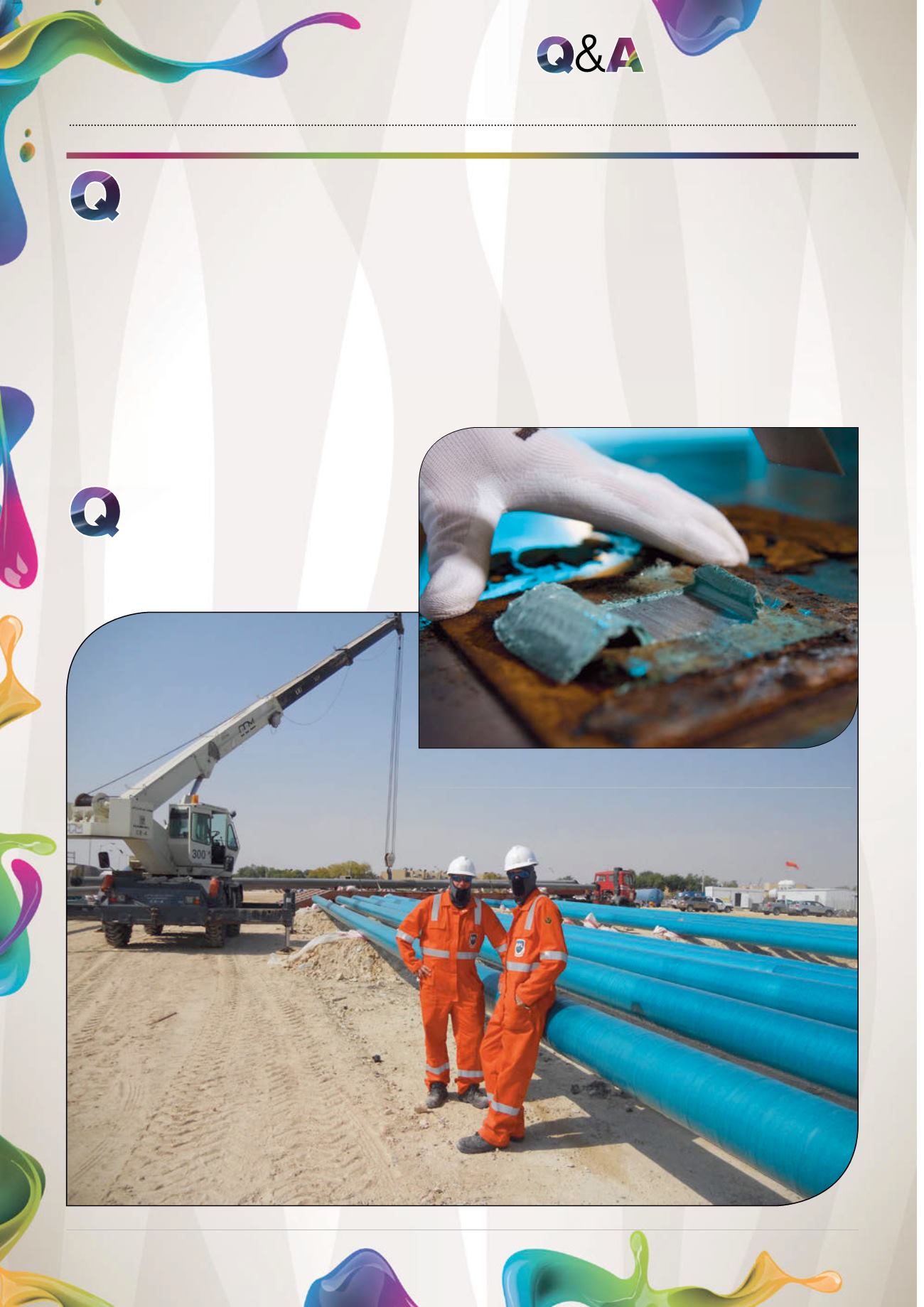
COATINGS
Ing. E. Broesder and J.F. Doddema, Seal for Life (Stopaq B.V.)
How can you address the threat of
Microbiologically Influenced
Corrosion (MIC)?
In general, bacteria causing MIC are present in every
environment where pipelines are operated. MIC will become
manifest when the conditions are right for the bacteria
to grow and multiply. A few important conditions include
access to the steel substrate and the availability of essential
nutrients. Many coating types contain chemical substances
that can serve as a nutrient source, and access to bare steel
is often caused by application faults or mechanical damage
to the coating. Since damage to a coating cannot be avoided,
reducing the risk of MIC can be achieved by selecting a
coating that does not contain any nutrients, and which
minimises application faults by ease of application and
training of workers.
What are the best methods for
avoiding premature coatings
failure?
Premature coating failures can arise in several stages,
from manufacturing through to construction and
operation. Whilst mechanical damages in manufacturing
and construction are relatively easy to detect, operational
defects are more difficult. The operational and environmental
conditions that a coating is exposed to often do not
match the properties of the coating selected. Therefore,
it is important that in the design stage all operational
and environmental factors that pose a threat to coating
integrity are inventoried. This includes expected excessive
mechanical loads and impacts during construction of the
pipeline, operational temperatures and expected temperature
excursions, and presence of chemical substances in soil and
groundwater that cause coatings and adhesives to deteriorate.
Figure 2.
Stopaq coated pipelines ready for horizontal drilling in the Middle East.
Figure 1.
Wet/dry and cold -30/+70 ˚C corrosion test exhibiting no
undercreep or corrosion outside the stopaq patch to SA 2.5 blasted steel.
54
SEPTEMBER
2014


